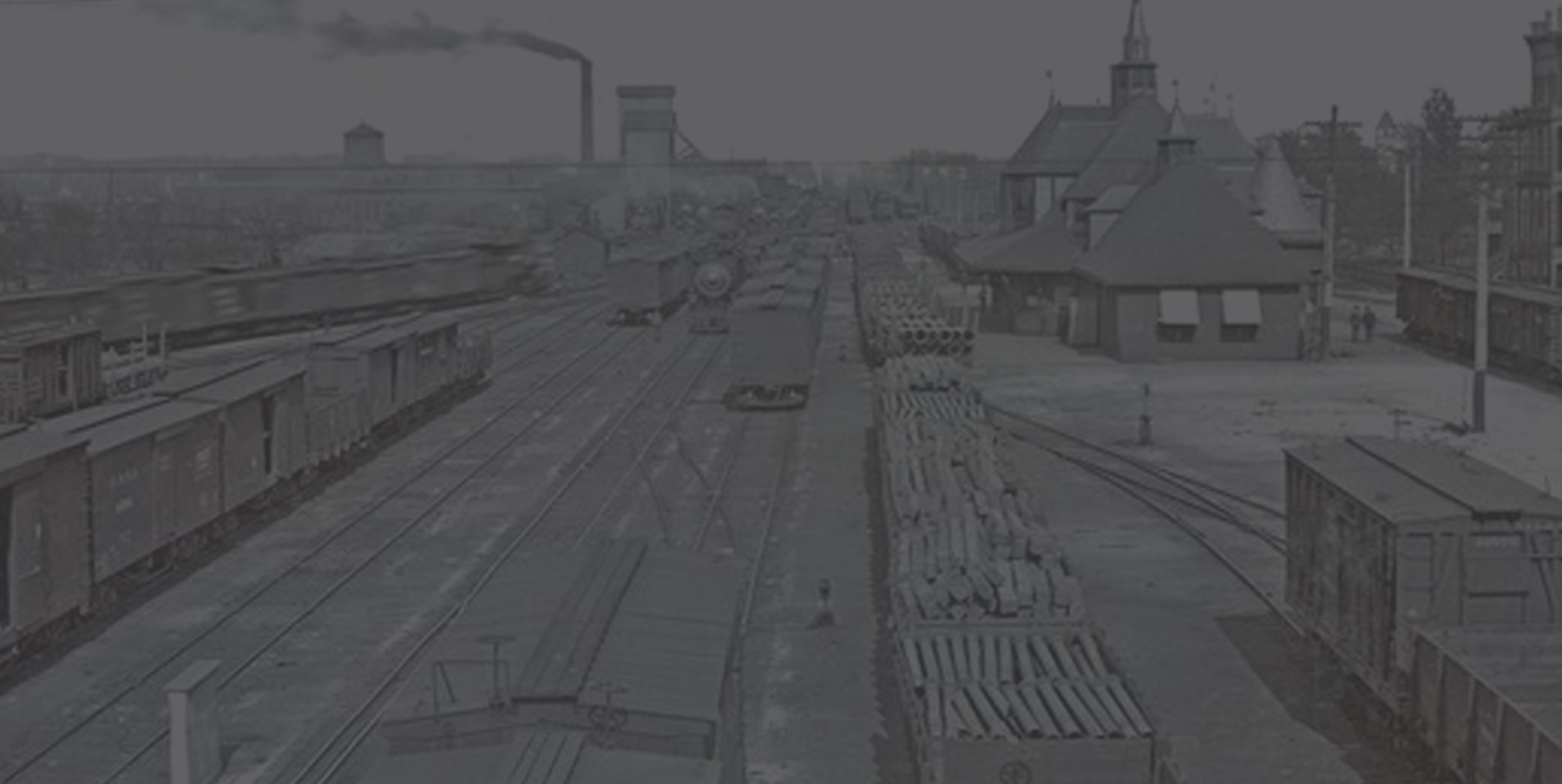
Pre-1868
The people of Springfield had been looking forward with bright anticipations to the dawning of a new era of prosperity with the RR from 1850 until 1870 when it was completed. “Still, though not realizing their fondest anticipations, the citizens of Springfield hailed with joy the day when the road was completed to a point so near their borders."
However, this caused a rift between “Old Town” and “New Town” because there had been a lot of work done to have the railroad go directly into “Old Town.” When the railroad was placed in North Springfield, the citizens of Springfield proper felt they had been cheated out of a significant revenue producing entity. Only when the two towns were combined in 1887, did the animosity subside. It did not eliminate the hard feelings though.
1868
In 1868, a company of NY and Boston capitalists, with the assistance and cooperation of a few of the citizens of Springfield, purchased the Atlantic and Pacific RR from the State of MO, after Gen. Fremont failed to make the second payment on his purchase. The citizens who were actively engaged in the enterprise were Dr. Robberson, Eli Parrish, Chas. Harwood, Thomas Whitlock, S.H. Boyd, and Wm. Massey.
1869
In 1869 the city’s first newspaper was formed under the name of The Southwest. The newspaper was opened and then shortly thereafter moved to Commercial Street under the name of The Springfield Republican. In 1871 is was dissolved and reverted back to The Southwest. In 1875, it changed its name to The Southwester.
1870
1870 was a busy time on Historic Commercial Street. North Springfield incorporated on July 4th, but the two-thirds majority of petitioners was found to be illegal as most of the signers had not been in the State long enough to become citizens, so in May of 1871, the town was reincorporated legally.
In April, the first construction train from the South Pacific Railroad pulled into the recently built station at Commercial and Benton Ave. and the boom began.
The Ozark Land Co. erected one of the first buildings in North Springfield opposite the passenger depot as a first class hotel named the Ozark House, which was destroyed by fire in 1874.
J.C. Jackson erected a two-story brick building on the south side of Commercial Street, near the corner of the Jefferson Ave. intersection.
H.H. Kaufholz erected a two-story brick building on the corner of Commercial Street and Robberson for a General Store. The building was destroyed by fire in 1872, which was caused by the burning of the famous Fellows elevator across the street, the heat being so great as to ignite the General Store 100’ away.
1871
The Brotherhood of Locomotive Engineers was chartered with 44 members and met in the Masonic Hall. A disabled member could receive $10 per week for the time they were unable to work.
1872
A brick public school was built on the north part of town at a cost of $17,000, which is now Central High School.
1873
Drury College was founded just a short distance away from the business district of North Springfield.
H.H. Kaufholz constructed another building on the site of the burned general store and added another store room that was rented by H.H. Haynes for millinery and fancy goods.
The Railroad moved its car and engine repair shops to the corner of Summit & Sherman.
1874
Parce and Gray wagon builders constructed a manufacturing complex at 211 – 215 E. Commercial. The building was still standing in 1884 at the time Holcombe wrote the historical archive of North Springfield.
A bill was introduced in the State Legislature to extend the limits of Springfield to include North Springfield should both towns agree. The first vote was taken in North Springfield, and the results were 72 against and 1 in favor, the lone vote cast as a joke. Learning of the result, Springfield did not consider it necessary to take a vote.
1875
The first train arrives at the Main Street station.
Dr. Hansford erected a three-story brick hotel on the site of his burned frame boarding house on the South side of Commercial Street called the Lyon House.
1876
Feeling encouraged by the prosperity of the booming town, J. C. Jackson erected a second brick building adjoining the first one on the east near Jefferson Avenue.
1878
J.C. Jackson raised his building one story higher. One room of this block was used for grocery, and the remainder was fitted for a hotel, which operated under the name of North Springfield House.
1879
The Ozark Hotel rebuilt after a fire destroyed a portion of it.

1880
The town of North Springfield issued a franchise to the Spfd. Railway Company for horse drawn cars.
1881
Rails linking Springfield and North Springfield were laid.
1884
After ten years of prosperity, serious construction continued on Commercial Street.
1887
The two towns merged, and construction continued on Commercial Street.
1889
An electric trolley system was created to move people around the heavily trafficked town.
1891
St. John’s built a hospital at the corner of Washington and Chestnut Avenues and a new Jail was built at the corner of Robberson and Central.
1899
Frisco Hospital was built at the corner of Atlantic and Broadway to serve railroad workers.
1902
Citizens bank opened at 220 E. Commercial with capital assets of $25,000. Principal founders were the McDaniel family and Tom Watkins, Sr. who sold his grocery store and joined the bank as a cashier and stockholder. Ed V. Williams, who later left to open a clothing store, was the bank’s president.

